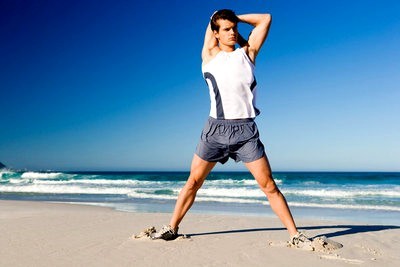Enhancing Muscle Functionality: The Impact of Foot Orthotics
Introduction: Muscle functionality plays a pivotal role in our everyday movements, from walking to running and everything in between. However, issues such as poor foot alignment or biomechanical inefficiencies can hinder optimal muscle performance, leading to discomfort and even injury. In such cases, foot orthotics emerge as a valuable tool in improving muscle functionality and overall physical well-being.
Understanding Foot Orthotics: Foot orthotics, also known as orthotic insoles or inserts, are custom-made or over-the-counter devices designed to support and align the feet properly. They are tailored to address individual foot anatomy, gait patterns, and specific biomechanical abnormalities. These devices can vary in material, shape, and function, aiming to provide stability, cushioning, and corrective support where needed.
Impact on Muscle Functionality: The relationship between foot alignment and muscle functionality is intricate. Misalignments or abnormalities in foot structure can lead to compensatory movements, placing excessive strain on muscles and joints. Here’s how foot orthotics can positively influence muscle functionality:
- Correcting Alignment: Foot orthotics are crafted to address various foot issues such as overpronation (inward rolling of the foot), supination (outward rolling), flat feet, or high arches. By providing corrective support, they help distribute weight evenly across the foot, reducing strain on muscles and promoting proper alignment.
- Enhancing Shock Absorption: During physical activities like walking or running, the feet endure considerable impact forces. Ill-fitting footwear or biomechanical irregularities can impede the body’s natural shock absorption mechanism, leading to discomfort or injury. Foot orthotics with adequate cushioning properties can absorb shock effectively, reducing the strain on muscles and minimizing the risk of overuse injuries.
- Improving Muscle Recruitment: Proper foot alignment facilitated by orthotics can optimize muscle recruitment patterns. When the feet are properly supported, muscles can engage more efficiently, contributing to improved stability, balance, and power generation during movement. This, in turn, enhances overall muscle functionality and performance.
- Alleviating Pain and Fatigue: Muscle fatigue and discomfort are common consequences of biomechanical imbalances or improper foot support. By promoting better alignment and reducing excessive stress on muscles, foot orthotics can alleviate pain and fatigue, allowing individuals to engage in activities more comfortably and for longer durations.
- Preventing Injuries: One of the significant benefits of foot orthotics is their potential to prevent injuries associated with poor foot mechanics. By addressing underlying biomechanical issues, orthotics help mitigate the risk of conditions like plantar fasciitis, shin splints, Achilles tendonitis, and stress fractures, thereby enabling individuals to pursue their physical activities with reduced injury concerns.
Foot orthotics serve as invaluable tools in optimizing muscle functionality and promoting overall musculoskeletal health. By addressing biomechanical abnormalities, providing support, and enhancing shock absorption, these devices play a crucial role in reducing strain on muscles, alleviating discomfort, and preventing injuries. Whether for athletic performance enhancement or everyday comfort, incorporating foot orthotics into footwear can significantly improve quality of life and facilitate pain-free movement.
Remember, consulting with a healthcare professional or a qualified chiropractor is essential to determine the appropriate orthotic solution tailored to individual needs and foot conditions. With the right support, every step can be a stride towards enhanced muscle functionality and well-being.


